Southern Pecan Pralines are pecans embedded in creamy brown sugar that slowly and luxuriously melt in your mouth. They’re easy to make, especially with a candy thermometer. So good, you’ll want to make these pralines again and again!
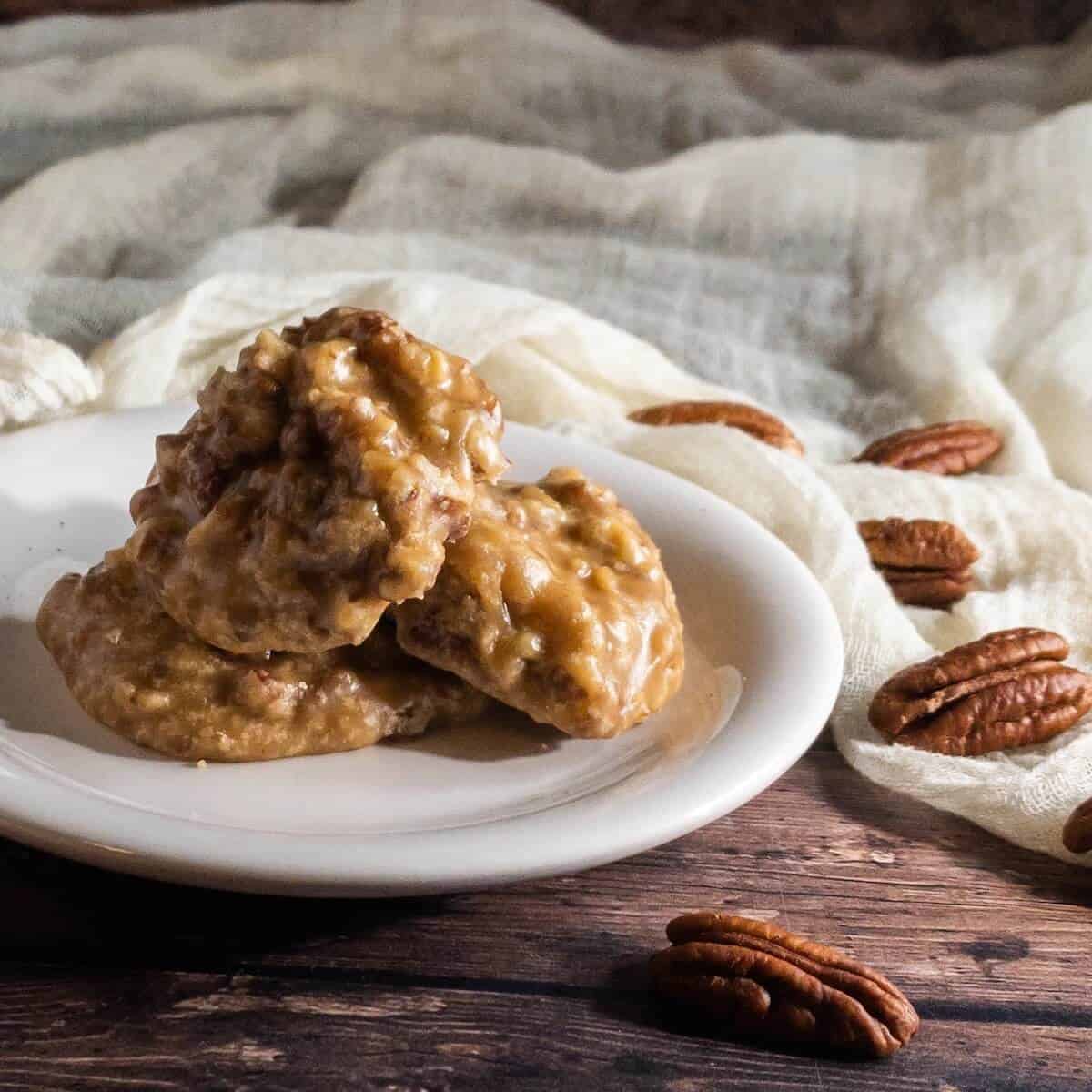
Jump to:
[September, 2020: I've reworked the recipe and updated this post with all new pictures. Enjoy!]
Why this recipe works
- Brown sugar provides a dark sweetness, while heavy cream adds richness and flavor
- Pecans have a nice chewy bite, not too crunchy
- Using a candy thermometer ensures that these praline candies reach the perfect soft and creamy texture
Generally speaking, I love to bake. Yes, there can be pitfalls, from inaccurately measured ingredients to overheated (or underheated) ovens, but more often than not things turn out well.
Candy making is a whole other ball o’wax. If baking is temperamental, working with sugar is downright ornery. When you’re boiling sugar for candy, a few degrees can make a huge difference. That's what I learned from making Southern Pecan Pralines. Patience is definitely needed for success.
And I'm not talking about candied pecans. Homemade pecan pralines are mounds of what can only be described as pecans embedded in a creamy, brown sugar blanket that slowly and luxuriously melt in your mouth.
Say it with me now, "Practicing patience when cooking the sugar syrup leads to pecan pralines with the perfect texture." So be sure to have your candy thermometer (and patience) handy, and give it a go.
They'll melt in your mouth with a creamy caramel goodness balanced with a crunch of buttery pecans.
Mmmmmm…
⭐⭐⭐⭐⭐
These are so yummy! Highly recommend!
- Shira
Soft-ball stage candy
So why am I highlighting pralines? Well, it’s the heating of the sugar to the precise temperature of 239°F, what is called soft-ball stage, that makes or breaks a pecan praline recipe.
It’s been hit-or-miss for me when I’ve tried it, even with a digital or candy thermometer, mainly because I never really paid attention to what soft-ball stage really meant. And believe me when I tell you it means a lot!
Here’s a quote from the Exploratorium: "As a sugar syrup is cooked, water boils away, the sugar concentration increases, and the temperature rises. The highest temperature that the sugar syrup reaches tells you what the syrup will be like when it cools. In fact, that’s how each of the temperature stages…is named."
Sugar Science
There are six stages in candy making: thread, soft-ball, firm-ball, hard-ball, soft-crack, and hard-crack. (Boy, there are so many asides I could make about these names!)
I won’t bore you with the characteristics of each of these stages (you can go to the Exploratorium's website and bore yourself without me), but I want to highlight the soft-ball stage:
- Range: 234° F–240° F
- Sugar concentration: 85%
- Comments: At this temperature, sugar syrup dropped into cold water will form a soft, flexible ball. If you remove the ball from the water, it will flatten like a pancake after a few moments in your hand.
So the soft-ball stage is when the sugar syrup will have some cohesion, but it will keep the candy soft (think fudge).
What soft ball stage temperature to use for pralines
But just using the thermometer isn’t enough. Candy stages are a range of temperatures. Since a few degrees makes a difference, where in the range you decide to proceed with the recipe is crucial.
If you cook the praline candy until 234°F (the lowest temperature of the range), the finished pecan candy will be dry and grainy rather than soft and satiny.
Waiting until the candy gets to 239°F (which, incidentally, was labelled “soft-ball” on my candy thermometer) will yield smooth creamy brown sugar goodness that just melts on the tongue.
After you master the art of soft-ball stage patience, making a recipe for pecan pralines is merely the task of cooking, stirring, cooking, and stirring again.
Easy peasy.
Recipe Ingredients
You'll need the following ingredients to make this pecan praline recipe:
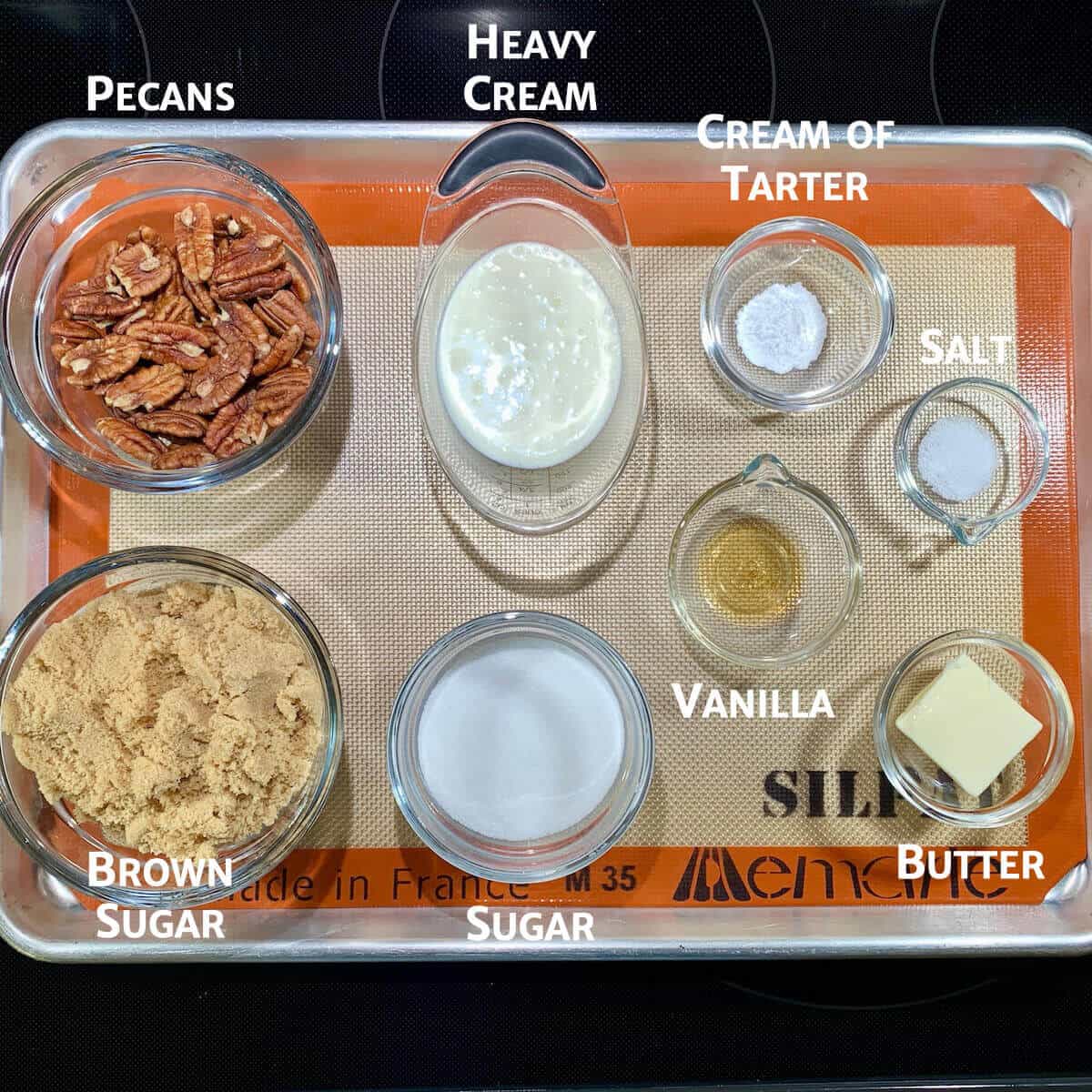
Ingredient Notes
Pecans: Raw pecans are the backbone for pecan pralines. You'll want them to have medium-sized pieces.
Brown sugar: I use light brown sugar so as not to detract from the pecans by introducing a darker molasses flavor. I'm looking for balance here.
Heavy cream: Just like with making butterscotch sauce, introducing heavy cream to the melting sugar mixture creates the rich creamy mouthfeel pralines are known for.
Cream of tartar: When you're melting sugar, there's the chance that the sugar will crystalize (this is especially true when making caramel). Cream of tartar helps to prevent the creation of sugar crystals for a smooth candy.
See the recipe card for a full list of ingredients and measurements.
How to make pecan pralines
Step 1: Chop the pecans
When you chop the pecans, you'll want them small enough to fit into a mound of candy, but not so small that they become lost (photo 1). Think medium-sized pieces.
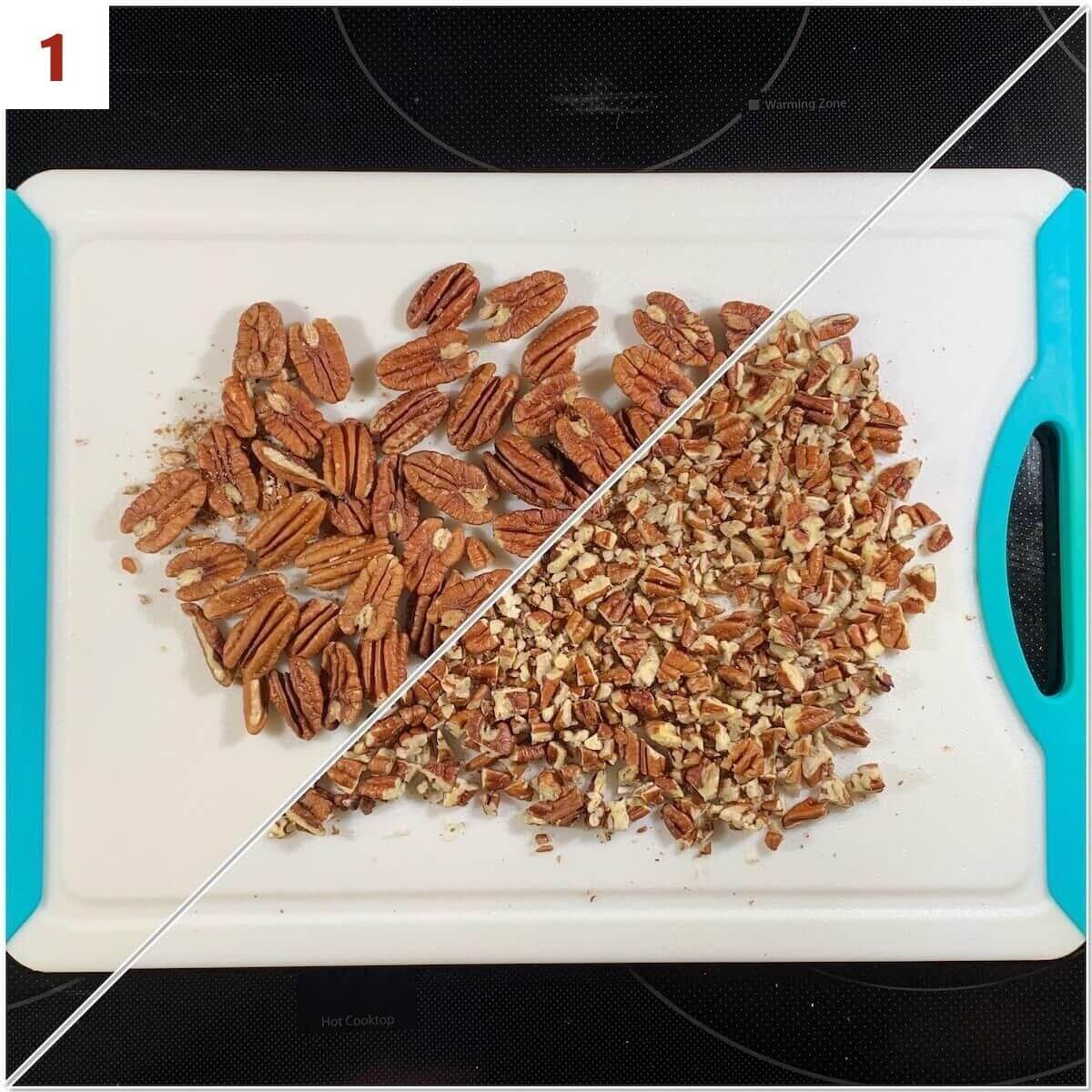
Step 2: Cook the candy to soft-ball stage
Combine the sugars, ¼ teaspoon salt, heavy cream, and cream of tartar in a heavy saucepan (photo 2).
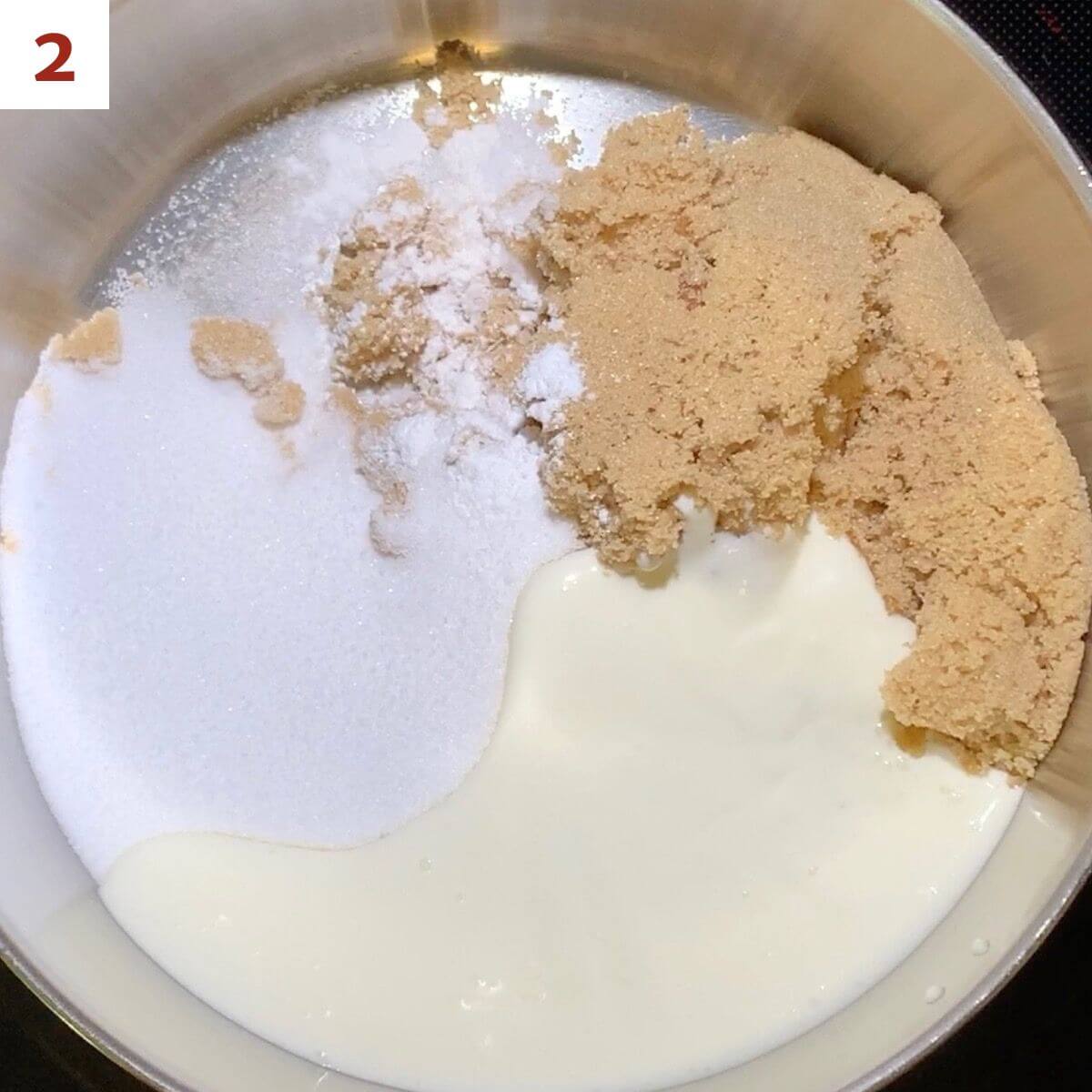
Stir over low heat until the sugar dissolves, wiping the crystals from the sides of the pan with a rubber spatula. Then kick up the heat to medium and boil the syrup until you reach that magic soft-ball stage temperature of 239°F (photo 3). It'll take about 10 to 15 minutes to reach the proper temperature.
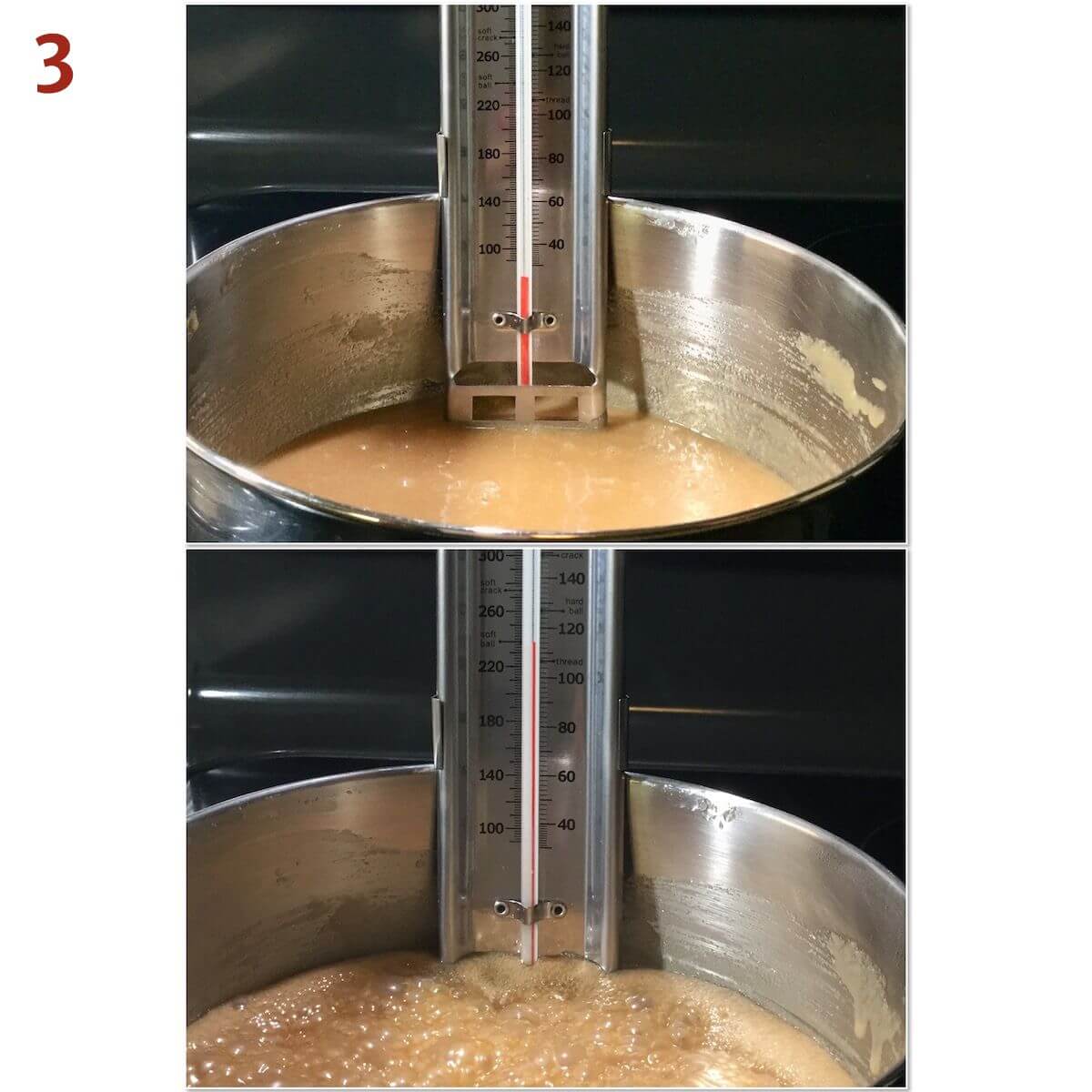
Step 3: Add the pecans
Stir in the pecans and continue to boil the candy for 2 minutes. Remove from the stove and stir in the butter, vanilla, and salt. Stir to cool the pralines down a bit (photo 4).
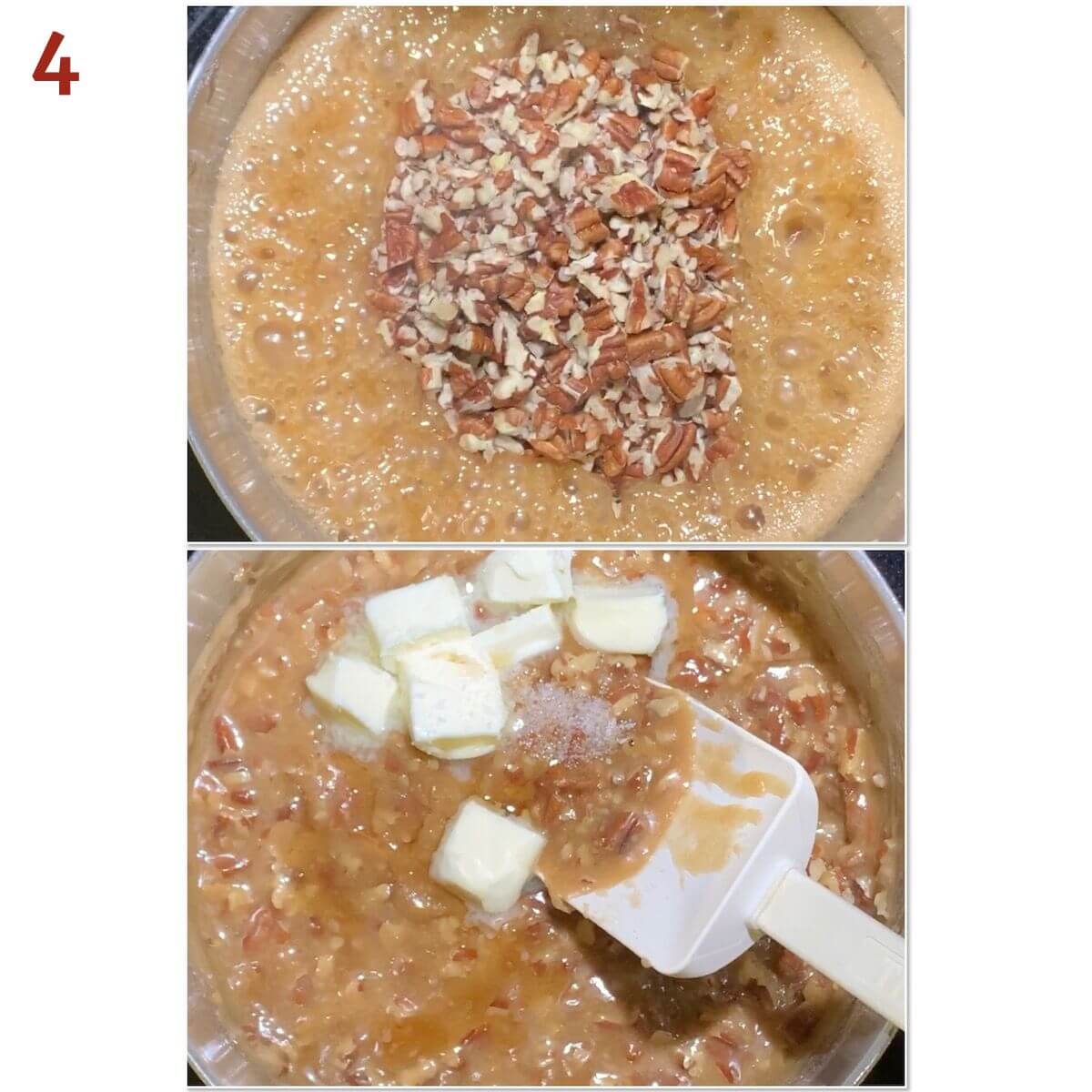
Step 4: Portion the batter
Working quickly, portion the candy on a half sheet baking pan lined with a Silpat silicone mat or parchment paper into 2-tablespoon mounds using a medium cookie scoop (photo 5). The candy will firm up quickly, making it harder to scoop.
When the pralines are cool and firm, remove them from the pan. If desired, place the pralines on squares of waxed paper and wrap individually.

Storage instructions
Storage instructions: Pecan pralines can be stored in an airtight container at room temperature for up to one week.
The right way to say pralines
One more point - I had always pronounced these as “Pray-leens,” but I've been corrected: they should be called “Prah-leens.”
It's good to learn. However you pronounce Pecan Pralines, I hope you will try them!
Questions asked and answered
Here are some questions you might have...
Candied pecans (or any candied nut) is where the whole nut is tossed in a spiced mixture of egg whites and sugar, then baked. Pralines are a brown sugar candy with chopped pecans mixed in.
By the way, if you do want to make gluten-free and egg-free candied nuts, try these Keto candied almonds. Yum!
Make sure you cook the candy to 239°F (soft-ball stage) on a digital or candy thermometer. That will ensure that the candy has just enough moisture and pliability to make the praline candy creamy rather than grainy.

More fudge and candy recipes to try
Recipe
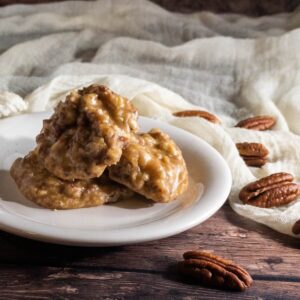
Southern Pecan Pralines Candy
Equipment
Ingredients
For the candy
- 1 cup light brown sugar
- ½ cup granulated sugar
- ¼ teaspoon kosher salt
- ½ cup heavy cream
- ¼ teaspoon cream of tartar
For the mix-ins
- 1 cup pecans, coarsely chopped
- 2 tablespoons unsalted butter
- ½ teaspoon pure vanilla extract
- ⅛ teaspoon kosher salt
Instructions
- Combine the sugars, ¼ teaspoon salt, heavy cream, and cream of tartar in a heavy saucepan. Stir over low heat until the sugar dissolves, wiping the crystals from the sides of the pan with a rubber spatula.
- Clip a candy thermometer to the side of the pan, being careful that it's not touching the bottom of the pan. Over medium heat, cook the syrup until the mixture reaches 239 °F (soft-ball stage), about 10 to 15 minutes.
- Add the pecans. Cook, stirring constantly, for 2 minutes. Remove from heat, then stir in the butter, vanilla, and ⅛ teaspoon salt.
- Beat until the mixture looks creamy around edges of pan. This happens very quickly but if you need to speed the process, put the saucepan in cold water while beating.
- Using a medium cookie scoop, drop the candy in 2-tablespoon mounds onto a half sheet baking pan lined with a Silpat silicone mat or parchment paper.
- When the pralines are cool and firm, remove them from the pan. If desired, place the pralines on squares of waxed paper and wrap individually.
- Storage instructions: Pecan pralines can be stored in an airtight container at room temperature for up to one week.

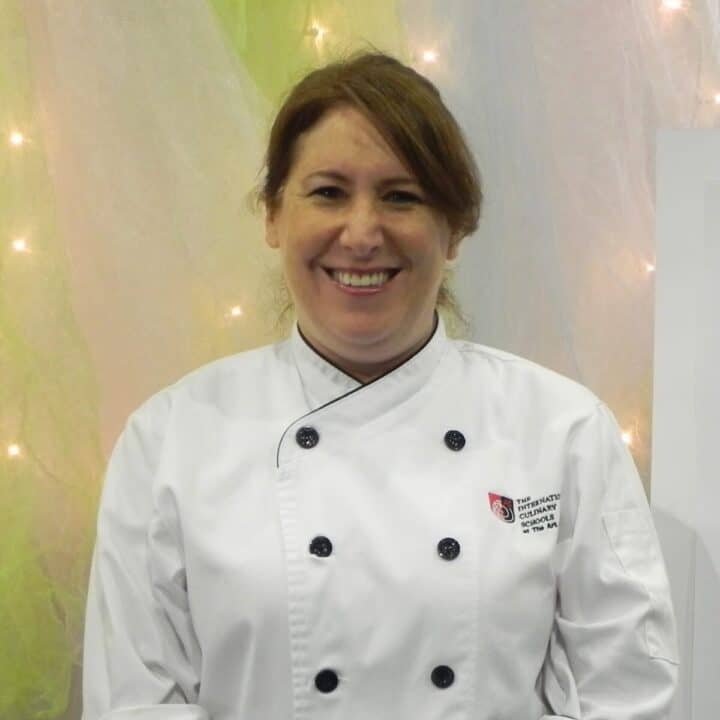
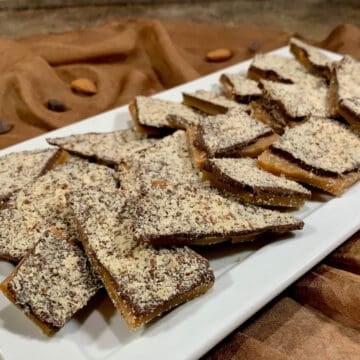
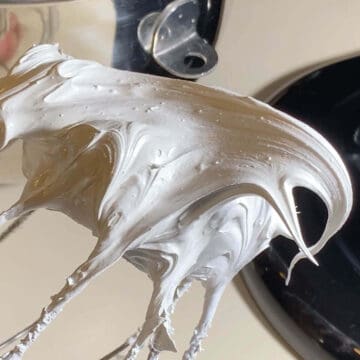
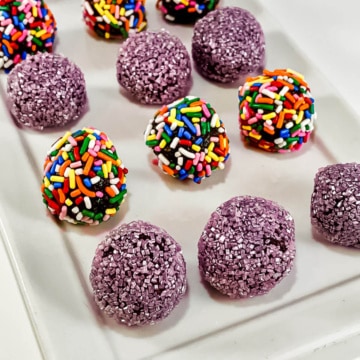
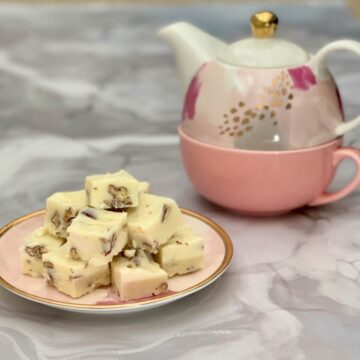

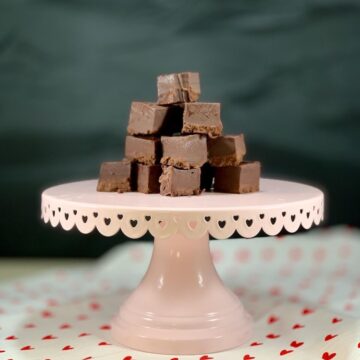
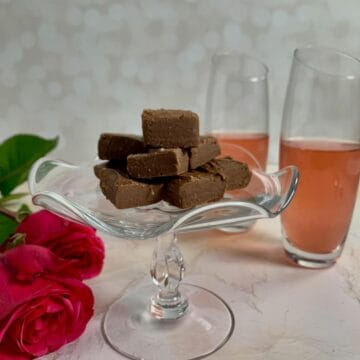
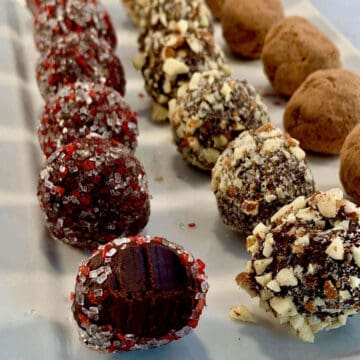


Ellyse says
Could I substitute Coconut cream for the heavy cream? Just wanted to see if you've ever tried that. Thank you, Ellyse
Tammy Spencer says
Hi Ellyse, good question! I haven't tried that substitution myself, but it would be interesting to find out. I'd expect that the flavor of the pralines would change, but I don't know how the texture would be affected. If you do try it, please let me know how it goes! 😉
Anecia says
In Texas, they’re “ prayleens”, in Louisiana, they’re “prawleens”- but no matter where you are, they’re delicious!
Tammy Spencer says
I stand corrected! Thanks for the clarification 🙂
Shira Duff says
These are so yummy! Highly recommend!
Tammy says
Thanks! 😉